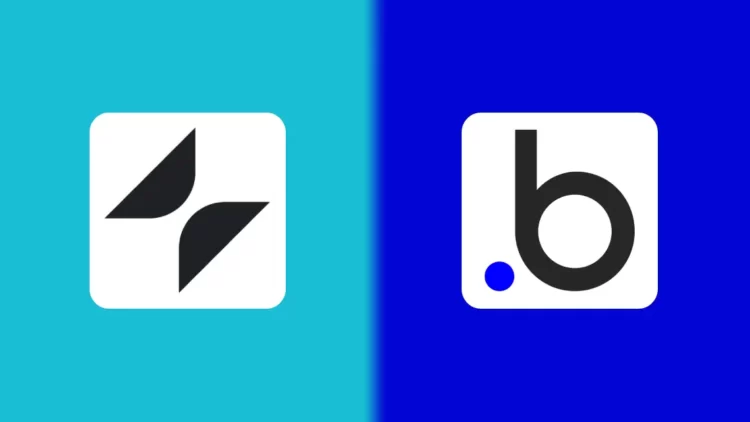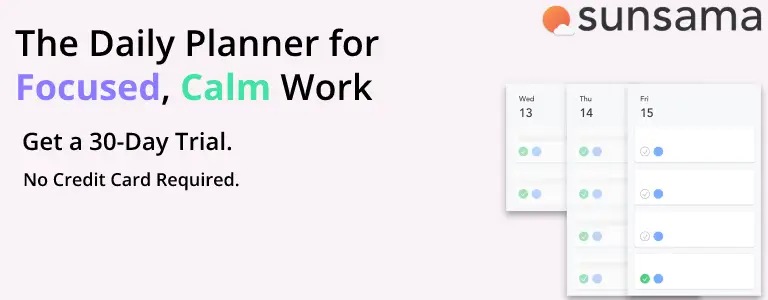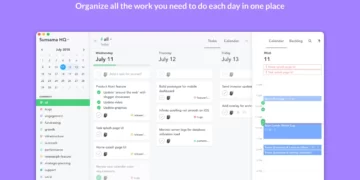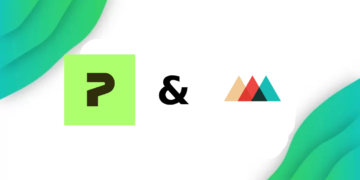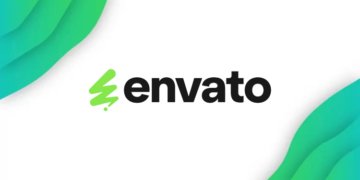Caffeine is Reader Supported, If you do buy through links on our website, we may earn a commission at no extra cost to you. Read the full disclaimer here
In recent years, the rise of no-code app builders has revolutionized the way businesses and individuals create and launch mobile and web applications. No-code app builders offer a simple and cost-effective way to build apps without requiring extensive coding knowledge or technical skills. Launching a SaaS doesn’t require having a large development team or spending months building the first version of your product, Nowadays you can use a no-code tool to create a Minimum Viable Product, internal tools, or even a fully functioning SaaS product.
It’s needless to say that No-Code app builders have changed the landscape of how we build tools, but with the existence of many no-code builders, it’s very easy to get lost in picking the “best” tool and never actually get started in building your product, that’s why comparing the biggest App Builders is so important.
TL;DR
In Short, both builders are good for their respective use cases, but if you’re looking to build a simple No-Code app like a client dashboard, inventory management app, or any other internal tool for your organization, Glide is the better option since you’ll be able to launch your app efficiently, and without much time on irrelevant parts of your app. The learning curve for Bubble is also larger than Glides.
If you’re looking to launch your own SaaS, or build a complex app for your enterprise, like a rider management app, or a B2B software solution like an analytics tool or an accounting tool, then Bubble is undoubtedly the better option, since with their plugin marketplace and advanced functionality, you’ll be able to build any app with a lot of functionality, without writing a single line of code.
What is Glide?

Glide is a web-based platform that allows users to create and publish mobile apps without any coding knowledge. It uses Google Sheets as a database and allows users to create custom interfaces and workflows for their apps using a drag-and-drop interface.
With Glide, users can create various types of mobile apps such as event apps, e-commerce apps, job boards, quizzes, and more. The platform offers various features such as the ability to add images, videos, and audio files, create forms and surveys, and integrate with other services like Zapier, Stripe, and Google Analytics.
Glide also has a large selection of templates that are often really helpful to use as a starting point for building your app.
What is Bubble?
Bubble is a no-code platform that allows users to build complex web applications using pre-built components and workflows. It offers a variety of features such as data modeling, responsive design, user authentication, and payment processing. Users can also create custom workflows and conditions to automate various processes within their applications.
The platform uses a visual programming language that is based on workflows and events. Users can drag and drop elements to create workflows and set conditions for each element. They can also use Bubble’s built-in database or connect to external databases like MySQL, PostgreSQL, and MongoDB.
Bubble has a large selection of Plugins, as well as a marketplace for apps, Interfaces, workflows, and complete apps that you can use to build your custom app.
Glide vs Bubble: Feature Comparison
While both tools may seem very similar, they are actually vastly different and are made to serve different users with different needs. Now let’s look at a detailed feature comparison to find out which tool comes out on top.
1) User Interface
The User Interface can really make or break your experience when building your app, since if the interface is too complicated, you will be spending a lot of extra time building the app and shipping features, which is time better spent elsewhere.
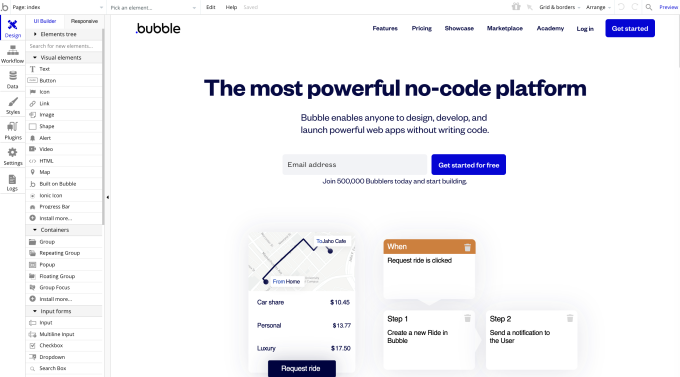
Bubble’s interface is very overwhelming at the start, but once you understand what everything does, you will be able to see that it’s not really that complicated.
The Bubble.io interface is designed to be user-friendly and intuitive. When you first log in to the platform, you are presented with a dashboard that gives you quick access to all of your projects. From there, you can create a new project or open an existing one.
Once you’ve opened a project, you are taken to the editor interface. This interface is divided into 7 sections, including the design section, the workflow section, and the data section.
The design section is where you can drag and drop elements onto your web page, such as buttons, text boxes, and images. You can also customize the look and feel of your application, including the color scheme, fonts, and layout. on the top toolbar, you can manage the pages of your website and your apps.
The workflow section is where you can create the logic of your application. Bubble.io uses a visual programming interface that is based on workflows and actions. You can create conditions, loops, and other logic to control how your application behaves, everything is drag and drop and doesn’t require any coding or programming knowledge, though it can get very complicated when using custom actions.
The data section is where you can manage the data that your app uses. You can create tables, fields, and relationships between data types. You can also import and export data to and from your app.
The other panels are much simpler, the Plugins panel lets you install an manage plugins for your app, the settings let you manage some small parts of your app and plan, and the logs panel is where you can see the error logs and other logs of your app.
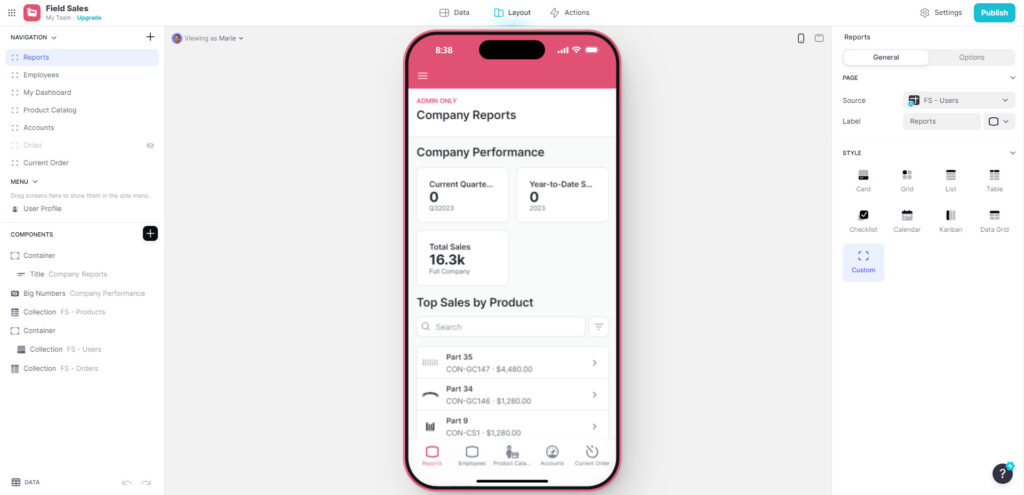
On the other hand, Glide’s interface is much simpler and only has 3 tabs to manage all aspects of your app, which are the Layout, Data, and Actions tab.
On the Layout tab, on the left-hand side, you can manage your pages, the side menu of the app, and each component on the page. On the right-hand side, you can fine-tune each component of the app, like selecting the data source, its name, style, visibility conditions, data filtering, and more.
On the Data tab, you can create Data Tables, which are spreadsheets of the data of your app, You can create spreadsheets for users, order data, clients, projects, tasks, and anything you can think of.
The Actions Tab lets you create Actions for your app, very similar to Bubble’s Workflow and Plugins tabs combined, You can connect your app to multiple other third-party tools like Slack, Microsoft Team, OpenAI, and more. You can build Actions for your app using a very simple Action builder using an If-This-Then-That drag-and-drop interface.
Overall, Both apps have very simple UI, though Bubble does have a slightly larger learning curve than Glide. After testing both apps, I did feel like I was more at home with Glide’s simpler UI, though it did feel a bit limiting, and Bubble’s UI felt like it was made to get things done, not just look pretty.
2) Functionality
Functionality is the most important part of any app builder since something with less functionality will be limiting and won’t let you add all the features you want for your app, this is important for the later stages of your app since you might need to add functions that simply can’t be done with your current app builder.
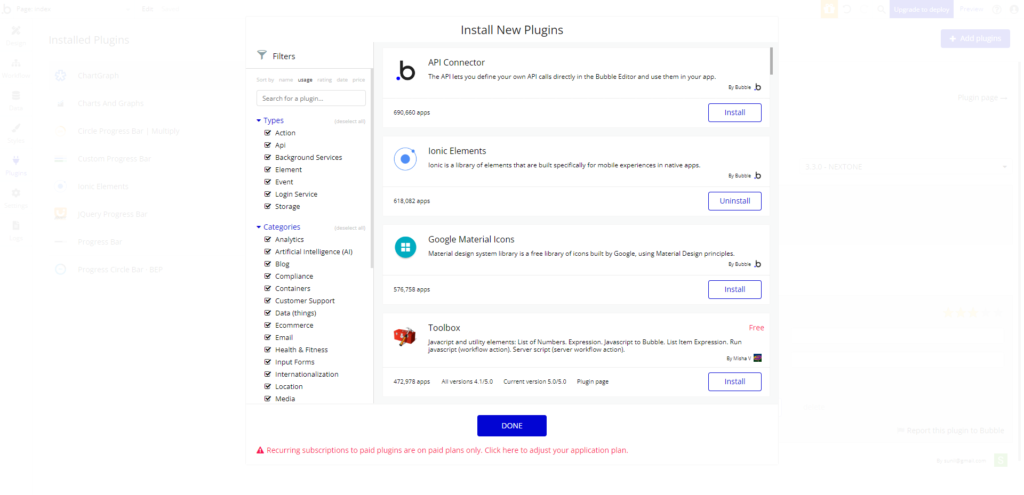
Bubble has a very large list of plugins you can download to add more functionality to your app, and there are many bubble developers available that can code custom plugins if need be. The Plugins can do anything from adding icons, graphs, javascript libraries, and so much more, so you’ll probably never feel limited using Bubble.
Bubble also has a very detailed workflow builder that you can use to add functionality to your app, you can create virtually anything you can think of when using the Bubble workflow builder, however, if you want to communicate with other platforms, you’ll have to use the plugin marketplace.
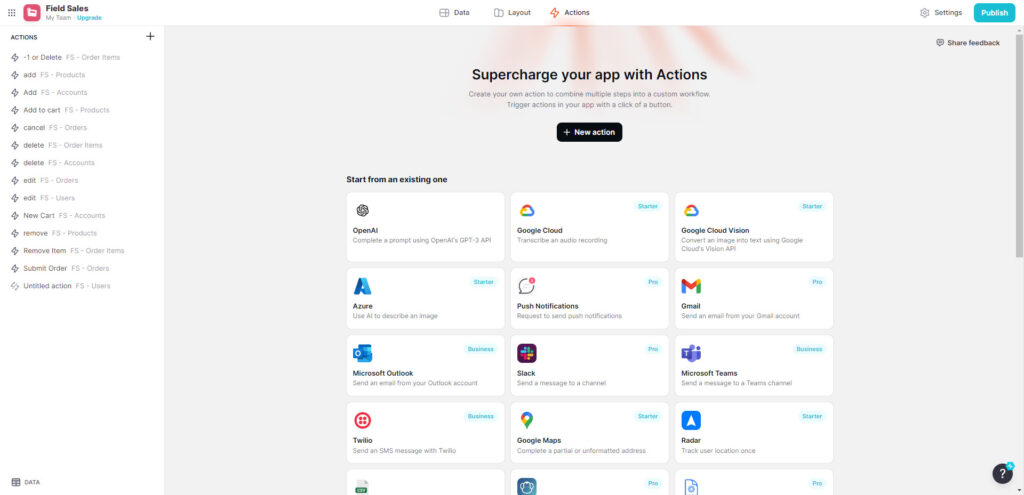
On the other hand, Glide integrates with a decent amount of apps, however, the list is considerably smaller than Bubble’s List, but Glide does work with Zapier and IFTTT which you can use to connect other apps.
Glide integrates with most email and SMS-sending platforms like Twilio, and other messaging platforms like Slack. The Action Builder is very simple, but can create really complex actions like scanning barcodes, changing data, Showing specific details to users, editing pages, and more!
Overall, I found the Glide builder to be much easier to use, and more feature-rich than Bubbles Workflow Builder, but with Bubble’s huge list of plugins you can install, you can achieve more using Bubble, though some plugins do come with an external subscription.
3) Customization
customization is a crucial aspect that can make or break the success of your project. It refers to the ability to tailor your app’s design, functionality, and user interface to meet the specific needs and preferences of your target audience. A good no-code app builder should offer a wide range of customization options that enable you to create an app that looks and works exactly the way you want it to, without having to write a single line of code. Bad design will lead customers away, but good design will do the opposite.
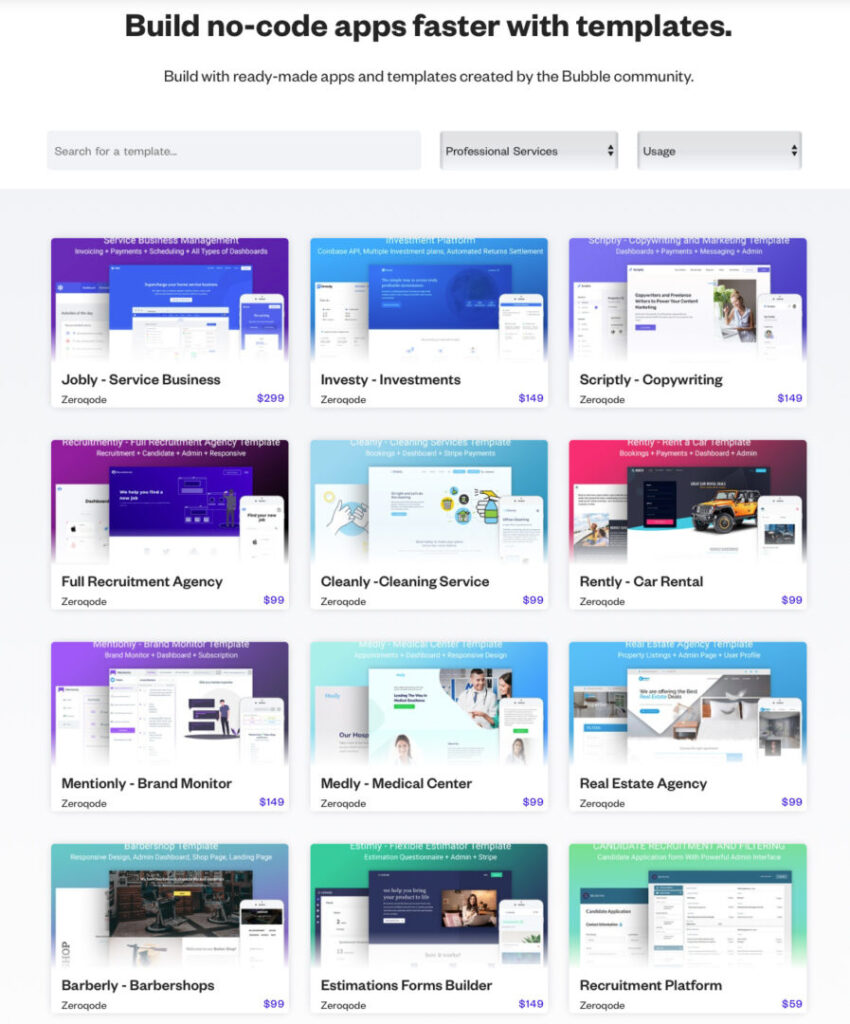
Bubble has a responsive drag-and-drop builder, which will let you build every page of your app, as well as any other page like your landing page, and testimonial page. The customization of Bubble is endless, especially considering you can download more elements from the Bubble plugin marketplace to use in your app.
You can pick your app’s color scheme, and font settings, and build each page to your liking, you can get extremely detailed and create complex pages, or create simple pages with a small number of elements.
Since you might feel that designing your own app from scratch can be hard (and let’s be fair, it is) Bubble comes with a template marketplace that lets you download complete app UIs straight into your Bubble app, The marketplace has hundreds of UIs for multiple app types, and some of them are free. Bubble also lets you import your Figma Design Files as a UI to your app.
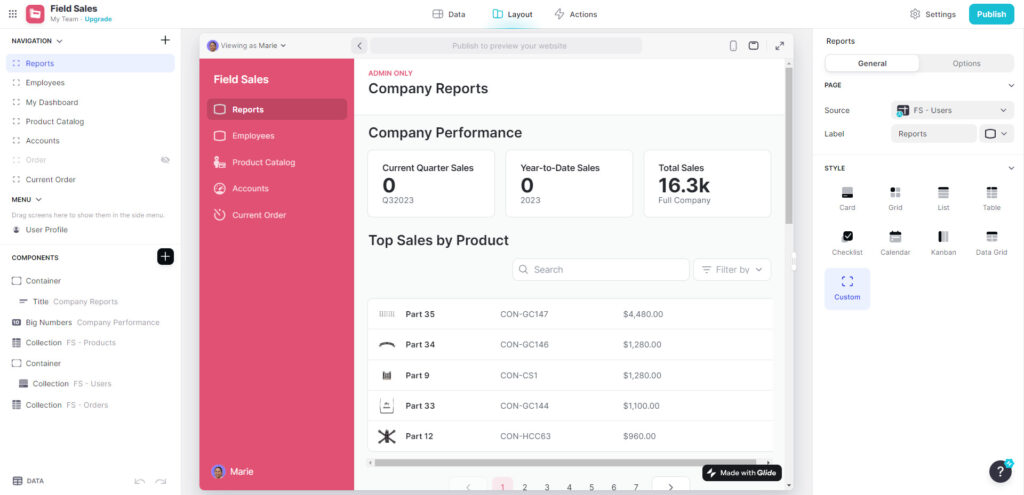
Glide’s design editor is a bit different, since most designs will feel similar in this app, you’ll have a sidebar and a list of elements down the middle, each element has 2 things, a data input, and a Style. Style is what you can customize each element to look like, you can make your elements a card list, a grid, a list, a table, a checklist, and more, there’s also a way to create custom styles.
Glide comes with a large list of complete app templates, that have all aspects of the app already built, which you can tweak to your liking, or publish straight away so your team can use them. This is especially good if you’re looking for a simple internal tool like a CRM, Field Sales tool, or anything that you’re going to be using for your organization.
4) Support
Having good support is a must in any no-code builder since you’re almost always going to run into problems, and you will have to turn to support to get help. It is essential to have access to help when building your app, whether it’s through a knowledge base, tutorials, community, or customer service.
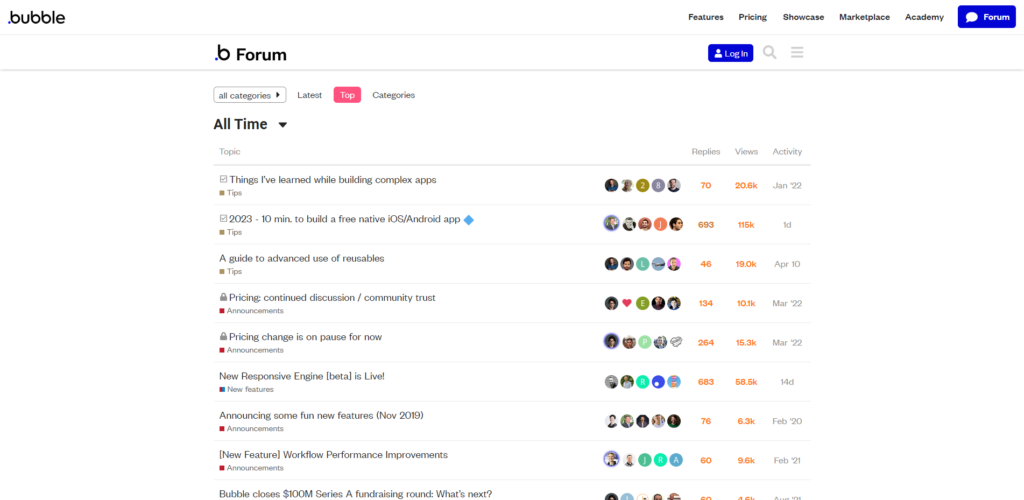
Bubble offers various support resources that you can benefit from, it has an extensive knowledge base that covers a range of topics related to working with Bubble. the blog also has step-by-step tutorials, video courses, and documentation on different features and functionalities of the platform.
Additionally, Bubble offers a forum where users can ask questions and get help from the community of Bubble.io users and staff, or showcase what they’ve built and plugins built on the platform. Bubble also provides customer support through email, and users can submit a support ticket to get assistance from the support team. During my testing, I found Bubble’s support to be very helpful and responsive.
Bubble also has a large number of agencies and experts available, so you can hire them for consultations, or for helping you build out certain functionality within your app, or even your full app completely, you can find those developers straight away through the bubble platform.
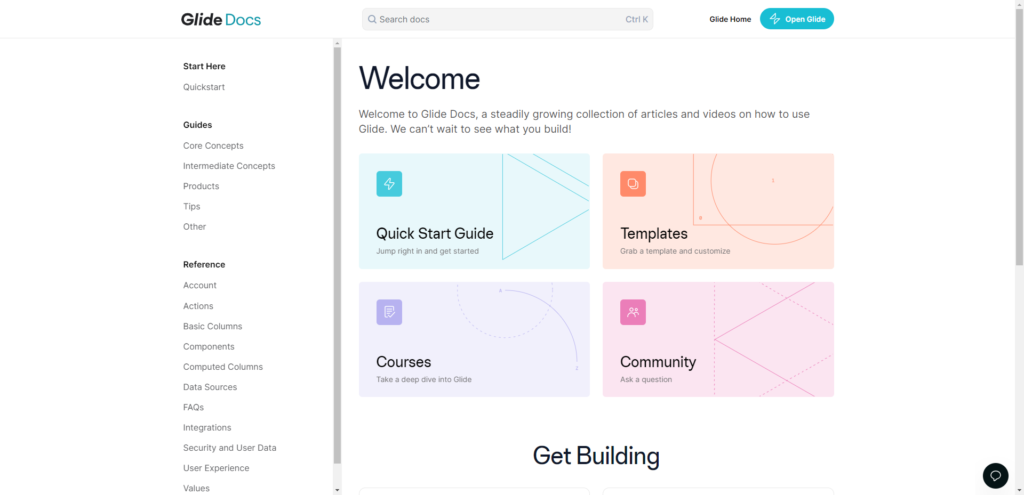
Glide’s Support has several options available. Glide has a deep list of documentation that covers all subjects of creating your app, from core tips and concepts to advanced integrations and calculations. It includes step-by-step guides, videos, and FAQs that can help you get started with building Gldide apps and troubleshoot any issues you may encounter.
If you’re unable to find the information you need in the documentation, you can reach out to the GlideApps support team. They offer support via email and have a fast response time, there is also a Live Chat option available as well.
In addition, to email and live chat support, Glide also has an active forum where users can ask questions, share tips and tricks, and connect with other users. The forum is monitored by the Glide Support team and is a great resource for getting help and advice.
Finally, Glide also offers a way to hire Glide Experts, which are freelancers and Agencies that offer development and consulting services to help you make the perfect app. The Expert team can work with you to troubleshoot issues, provide guidance on app development, and offer advice on best practices. This option may be particularly useful for users who are creating complex apps.
5) Pricing
Finally, Let’s cover the pricing of each app. We’ll take a closer look at the pricing structures of both platforms to help you determine which one is the right choice for your needs. We’ll compare the plans offered by each platform, the features included in each plan, and the potential costs involved in using each platform.
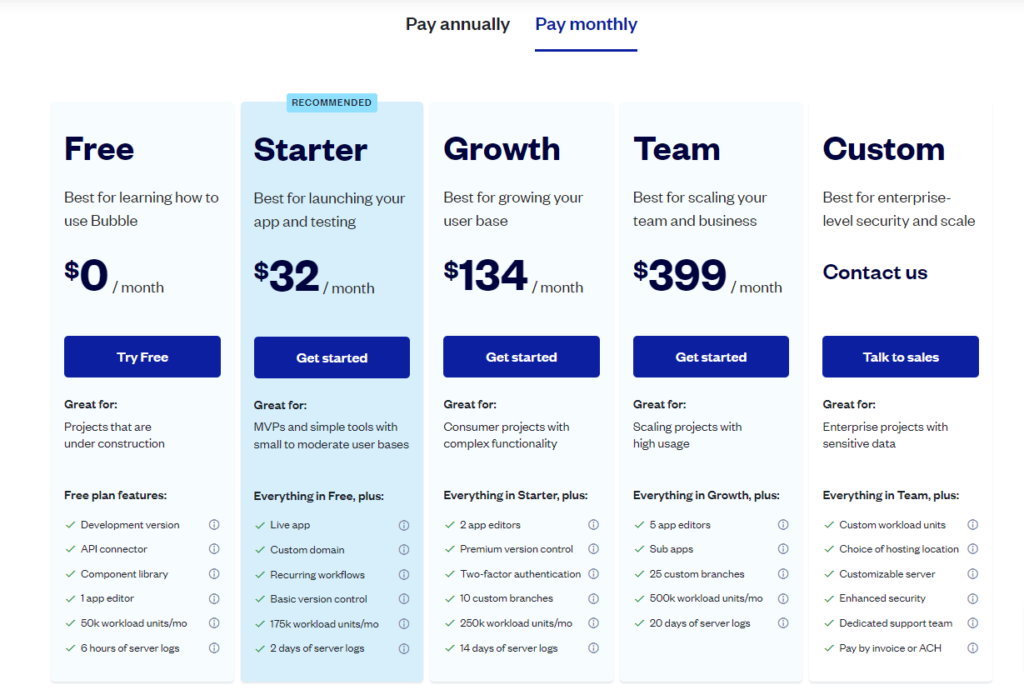
Before covering the plans, lets first understand how bubble measures app usage. Bubble measures how many resources your app uses by using something called “Workload Units” which depends on how complex your app is, and which plugins you are using. You can measure your workload units in the free version, so you can pick which plan you want to use, you will also receive a notification if your app surpasses your unit limit,
Bubble has 5 Plans that you can choose from, but since you actually can’t publish your app on the free plan, it’s more like 4 plans instead of 5. The starter plan is $32/month, or $29/month if billed annually, which grants you the power to publish your app on a custom domain, add recurring workflows, and basic version control, as well as 175K workload units.
The Growth Plan is $134/month or $119/month billed annually. The Growth plan comes with an extra editor for your app, better version control, 2FA integrations, and the ability to split your app into branches, as well as 14 days of server activity logs, this plan has 250K workload units. The Team plan is $399/month or $349/month billed annually, which gives you 3 more app editors, Sub-apps, 25, branches, and 500K workload units. Finally, there’s the Custom plan, which is made for enterprises and you can a custom quote for it by contacting Bubble.
Bubble also offers discounts for students and non-profits, as well as plans for agencies and freelancers. It’s important to note that Bubble’s plugins are billed externally, so you’ll probably end up paying more, especially if you use many premium plugins.
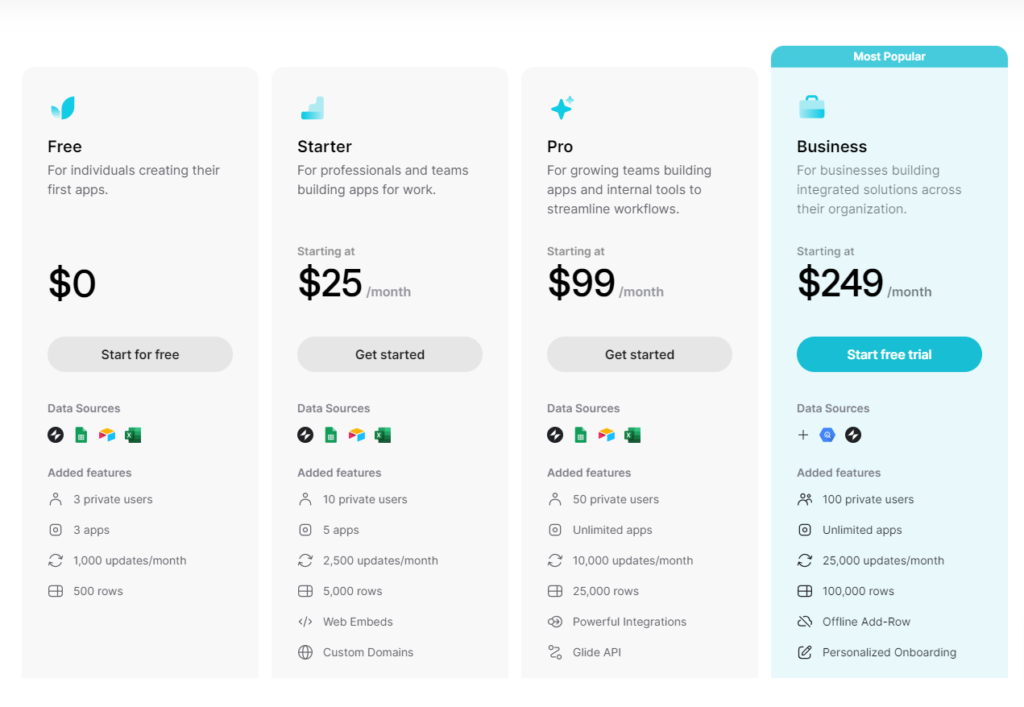
Instead of pricing based on app usage, Glide prices their plan based on the number of apps, the data in each app, and amount of users, both public and private users.
Glide has 3 paid plans, as well as a Free Plan, The Free plan gives you access to 3 Apps, 1000 app updates per month, and 500 rows of data, 10 public users and 3 Private users, which are users that are in your whitelist, this is good if you want only certain users to have access to your app. The Starter Plan costs $25/month and has increased users and apps, as well as a Custom Domain, and the option to whitelabel your apps.
The Pro Plan costs $99/month and comes with unlimited apps, 25K data rows, access to the Glide API, more integrations, and white labeling is free for this plan, as well as more design blocks.
Conclusion
In conclusion, both Glide and Bubble offer compelling options for building web applications without writing code. While GlideApps offers a simpler pricing structure and lower entry-level costs, its better for internal tools, and client-facing apps, while Bubble.io provides more advanced features and customization options for more complex projects and Software. Ultimately, the choice between these two platforms will depend on your specific needs, budget, and level of technical expertise.
In my opinion, if you’re planning on building a SaaS or any commercial use software, it’s almost always better to use Bubble since you might want to add more complicated features in the future. If you’re building an internal tool, a simple form, or an app for basic interaction with data like inventory management, then it’s always better to use Glide due to the easier app, which will make setup much faster than Bubble.
At the end of the day, the better one is the one that suits your needs, so testing both tools and seeing apps already built with each is a good idea.


